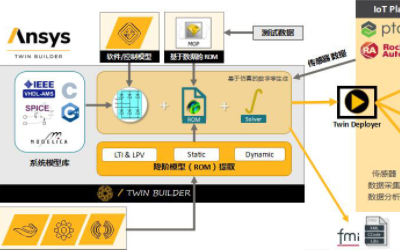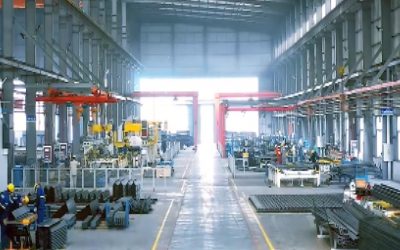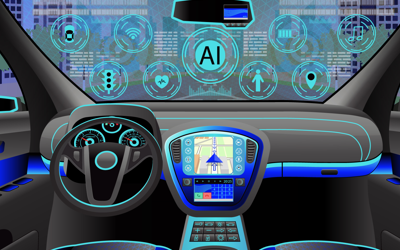China's car buyers flock to roomy, comfortable MPVs
Even as Chinese car buyers feed a boom in crossovers and SUVs, automakers are looking ahead to the likely next big thing and reckon affordable people haulers -- or multipurpose vehicles -- could be it.
Shifts toward electric vehicles in many cities, potential breakthroughs in autonomous technology and lifestyle changes with the relaxation of China's one-child policy pose challenges for product planners.
In the near term, some predict car buyers will want roomier, more comfortable interior space. Further ahead, others see self-driving cars and electric propulsion leading to radically new body styles with even more space and comfort in vehicles.
Chinese tend to live near their parents, and the changes to the one-child policy are expected to make family units larger, said Hiroji Onishi, chief of Toyota Motor Corp.'s China operations, on the sidelines of the Beijing auto show.
"We think MPVs have good prospects in China," Onishi said. "Given those changing life-stage needs, we think what's going to be popular are smaller, more affordable MPVs like the (Toyota) Noah Voxy, a compact minivan which we market in Japan."
Toyota designers say demand for the Alphard -- a boxy, premium minivan brimming with gadgets and business-class-like airline seats -- suggests an emerging appetite for a spacious upscale people mover.
The Alphard, imported from Japan, starts at 759,000 yuan ($116,690).
Subtle signal
Toyota officials and dealers say the van's interior comfort offers a more subtle way for China's rich to signal their wealth in a climate where overt excess is frowned upon. And in China, trends that catch on at the premium end traditionally spread quickly through the rest of the market.
Rising demand for MPVs contributed to an 8.8 percent increase in overall vehicle sales in March, according to the China Association of Automobile Manufacturers.
MPVs account for about 5.5 percent of China's passenger-vehicle market, with sales of 1.08 million vehicles last year, says consultancy IHS Automotive.
At the more affordable end of the market are the Wuling Hongguan microvan and the Baojun 730, a minivan sold by SAIC-GM-Wuling, a no-frills joint venture of General Motors, SAIC Motor Corp. and Guangxi Automobile.
Among the global automakers' MPV offerings are the Buick GL8 and Honda Motor Co.'s Odyssey.
The MPV segment also has expanded into a lucrative niche for spacious, luxury people movers such as the Mercedes-Benz Viano and the Alphard.
James Chao, Asia-Pacific managing director at IHS, believes other global automakers will mimic GM's strategy of emphasizing a market for affordable, family-oriented minivans.
SUV to MPV
Meanwhile, Chao sees China's SUV boom making up as much as 45 percent of the total market in around a decade -- in line with industry trends in the United States -- up from around 35 percent today and just 10 percent five years ago.
The boom has been driven by China's prosperous 30-somethings who want sleek looks and a roomy interior. Auto executives and industry experts predict SUV sales will continue to grow strongly for several years, even as the market becomes more crowded and profitability dips.
MPVs are unlikely to hit those heights, but demand is expected to grow 5 to 6 percent a year, Shanghai-based Chao said. "We expect the popularity of MPVs will spread more and more to family purchases," he told Reuters.
The minivan is a popular format across emerging markets, and smaller, cheaper MPVs sell well in countries such as Indonesia and Malaysia.
In the United States, MPV sales are likely to go in the opposite direction, IHS says. Deliveries are expected to slip to 3.5 percent of total U.S. sales in 2020, down from 4.5 percent last year.
Product planners at Audi see autonomous driving and electric cars as potentially revolutionizing car design, as new technologies allow for more space and comfort.
"Autonomous driving gives the car interior a totally different meaning," said Joachim Wedler, head of Audi's China operations, at the firm's Beijing tech center before the auto show.
"Fun and relaxation are the new targets for those cars, while [electrification] offers us different vehicle packaging opportunities as there's no [bulky] engine or transmission. Batteries more or less lie flat on the floor. We have totally different opportunities for roominess and ergonomics."
Wedler said, "These will lead us to a new concept for the car."
In the near term, some predict car buyers will want roomier, more comfortable interior space. Further ahead, others see self-driving cars and electric propulsion leading to radically new body styles with even more space and comfort in vehicles.
Chinese tend to live near their parents, and the changes to the one-child policy are expected to make family units larger, said Hiroji Onishi, chief of Toyota Motor Corp.'s China operations, on the sidelines of the Beijing auto show.
"We think MPVs have good prospects in China," Onishi said. "Given those changing life-stage needs, we think what's going to be popular are smaller, more affordable MPVs like the (Toyota) Noah Voxy, a compact minivan which we market in Japan."
Toyota designers say demand for the Alphard -- a boxy, premium minivan brimming with gadgets and business-class-like airline seats -- suggests an emerging appetite for a spacious upscale people mover.
The Alphard, imported from Japan, starts at 759,000 yuan ($116,690).
Subtle signal
Toyota officials and dealers say the van's interior comfort offers a more subtle way for China's rich to signal their wealth in a climate where overt excess is frowned upon. And in China, trends that catch on at the premium end traditionally spread quickly through the rest of the market.
Rising demand for MPVs contributed to an 8.8 percent increase in overall vehicle sales in March, according to the China Association of Automobile Manufacturers.
MPVs account for about 5.5 percent of China's passenger-vehicle market, with sales of 1.08 million vehicles last year, says consultancy IHS Automotive.
At the more affordable end of the market are the Wuling Hongguan microvan and the Baojun 730, a minivan sold by SAIC-GM-Wuling, a no-frills joint venture of General Motors, SAIC Motor Corp. and Guangxi Automobile.
Among the global automakers' MPV offerings are the Buick GL8 and Honda Motor Co.'s Odyssey.
The MPV segment also has expanded into a lucrative niche for spacious, luxury people movers such as the Mercedes-Benz Viano and the Alphard.
James Chao, Asia-Pacific managing director at IHS, believes other global automakers will mimic GM's strategy of emphasizing a market for affordable, family-oriented minivans.
SUV to MPV
Meanwhile, Chao sees China's SUV boom making up as much as 45 percent of the total market in around a decade -- in line with industry trends in the United States -- up from around 35 percent today and just 10 percent five years ago.
The boom has been driven by China's prosperous 30-somethings who want sleek looks and a roomy interior. Auto executives and industry experts predict SUV sales will continue to grow strongly for several years, even as the market becomes more crowded and profitability dips.
MPVs are unlikely to hit those heights, but demand is expected to grow 5 to 6 percent a year, Shanghai-based Chao said. "We expect the popularity of MPVs will spread more and more to family purchases," he told Reuters.
The minivan is a popular format across emerging markets, and smaller, cheaper MPVs sell well in countries such as Indonesia and Malaysia.
In the United States, MPV sales are likely to go in the opposite direction, IHS says. Deliveries are expected to slip to 3.5 percent of total U.S. sales in 2020, down from 4.5 percent last year.
Product planners at Audi see autonomous driving and electric cars as potentially revolutionizing car design, as new technologies allow for more space and comfort.
"Autonomous driving gives the car interior a totally different meaning," said Joachim Wedler, head of Audi's China operations, at the firm's Beijing tech center before the auto show.
"Fun and relaxation are the new targets for those cars, while [electrification] offers us different vehicle packaging opportunities as there's no [bulky] engine or transmission. Batteries more or less lie flat on the floor. We have totally different opportunities for roominess and ergonomics."
Wedler said, "These will lead us to a new concept for the car."








